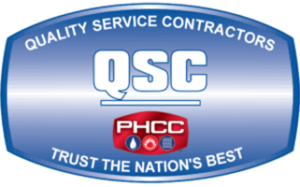Burst pipes are a major concern for homeowners during the winter months, especially in regions like North Bethesda, MD, where temperatures can drop suddenly. When water inside the pipes freezes, it expands, creating immense pressure that can cause pipes to crack or burst. This can lead to severe water damage, expensive repairs, and even potential health hazards from mold growth.
Understanding the common causes of burst pipes can help homeowners take proactive steps to prevent them. From poor insulation to high water pressure, several factors contribute to this issue. By addressing these risks in advance, you can protect your home and avoid costly repairs.
At Clarksburg Plumbing, we specialize in preventing and repairing burst pipes. Whether you need emergency repairs or winterization services, our experienced team is here to help keep your plumbing system in top condition throughout the colder months. In this article, we’ll explore the five most common causes of burst pipes and how you can safeguard your home against them.
Cause #1: Poor Insulation
One of the most common reasons for burst pipes in freezing temperatures is poor insulation. Pipes located in unheated areas—such as basements, attics, crawl spaces, and garages—are especially vulnerable. Without proper insulation, cold air can easily reach the pipes, causing the water inside to freeze and expand. This expansion increases pressure within the pipe, eventually leading to cracks or complete bursts.
Even indoor pipes along exterior walls can be at risk if they are not properly insulated. Older homes, in particular, may have insufficient insulation, making them more susceptible to freezing temperatures. Additionally, gaps or leaks in a home’s insulation can allow cold air to seep in, further increasing the risk of frozen pipes.
To prevent this issue, homeowners should insulate exposed pipes using foam pipe sleeves, heat tape, or fiberglass wraps. Sealing any gaps around windows, doors, and exterior walls can also help keep cold air out. Keeping cabinet doors open under sinks allows warm air to circulate around pipes, reducing the risk of freezing.
Investing in proper insulation not only protects your plumbing system but also helps improve overall energy efficiency. By taking these precautions, you can reduce the chances of dealing with costly water damage caused by burst pipes in winter.

Cause #2: Sudden Temperature Drops
Rapid temperature changes are another leading cause of burst pipes in winter. When the temperature drops suddenly, the water inside pipes can freeze before homeowners have a chance to take preventative action. As water freezes, it expands, creating intense pressure that weakens the pipe’s structure. Eventually, this pressure can lead to cracks or complete pipe bursts, resulting in significant water damage.
Pipes in unheated or poorly insulated areas are most at risk when temperatures drop unexpectedly. Sudden cold snaps, especially at night, can catch homeowners off guard, causing pipes to freeze before they realize the danger. Even in milder climates, a drastic temperature drop can still cause freezing if the plumbing system isn’t adequately prepared.
To minimize the risk, homeowners should maintain a consistent indoor temperature, even when away from home. Setting the thermostat to at least 55°F can help prevent freezing. Letting faucets drip slightly during extreme cold spells can also relieve pressure in the pipes, reducing the chance of a burst.
By staying aware of sudden weather changes and taking preventive measures, homeowners can protect their plumbing system from the damage caused by burst pipes during freezing temperatures.
Cause #3: High Water Pressure
Excessively high water pressure is another factor that can lead to burst pipes, especially in freezing temperatures. When a pipe begins to freeze, ice blockages form inside, restricting water flow. As water continues to move through the pipes, pressure builds up behind the blockage. If the pressure becomes too great, it can cause the pipe to crack or burst, leading to significant water damage.
Even without freezing conditions, high water pressure puts constant stress on your plumbing system. Over time, this strain weakens the pipes, making them more vulnerable to failure when temperatures drop. Older or already damaged pipes are particularly at risk, as they may not be able to withstand sudden pressure increases.
To prevent high water pressure from contributing to burst pipes, homeowners should monitor their water pressure levels. A pressure gauge, which can be attached to a faucet, can help measure PSI (pounds per square inch). Ideally, residential water pressure should stay between 40 and 60 PSI. If it exceeds this range, a pressure-reducing valve may be needed to regulate the flow.
By keeping water pressure at a safe level and addressing any irregularities, homeowners can reduce the risk of burst pipes and extend the lifespan of their plumbing system.
Cause #4: Aging or Weak Pipes
Over time, pipes naturally weaken due to age, corrosion, and general wear and tear. Older plumbing systems are especially vulnerable to burst pipes, as years of exposure to water, minerals, and pressure fluctuations can cause materials to deteriorate. When freezing temperatures hit, these weakened pipes are more likely to crack or burst under stress.
Certain pipe materials, such as galvanized steel or polybutylene, are more prone to corrosion and failure. As they degrade, small leaks may form, which can go unnoticed until extreme weather conditions cause a full rupture. Even newer pipes made of copper or PVC can develop weaknesses if they are subjected to repeated pressure fluctuations or improper installation.
Regular plumbing inspections can help homeowners identify aging pipes before they become a major issue. Warning signs of deteriorating pipes include discolored water, low water pressure, and frequent leaks. In some cases, repiping sections of the home may be necessary to prevent unexpected bursts during winter.
By replacing outdated or weak pipes before they fail, homeowners can reduce the risk of burst pipes and ensure their plumbing system remains in good condition year-round. Preventative maintenance is key to avoiding costly repairs and extensive water damage.
Cause #5: Frozen Outdoor Plumbing Fixtures
Outdoor plumbing fixtures, such as hose bibs, sprinkler systems, and outdoor faucets, are particularly vulnerable to freezing temperatures. When water remains trapped inside these fixtures during winter, it can freeze and expand, creating pressure that extends into the connected indoor pipes. If not properly winterized, this can lead to burst pipes inside the home.
Hose bibs and exterior faucets are common weak points in a plumbing system. When temperatures drop, any residual water inside these fixtures can freeze, increasing pressure throughout the connected pipes. Similarly, sprinkler systems with water left in the lines are at risk of freezing and cracking, potentially causing underground leaks that go unnoticed until spring.
To prevent frozen outdoor fixtures from contributing to burst pipes, homeowners should disconnect garden hoses and drain outdoor faucets before winter arrives. Installing frost-free hose bibs and insulating outdoor fixtures can also help reduce the risk. For sprinkler systems, professional winterization—including blowing out water from the lines—is the best way to prevent freezing and costly repairs.
By taking these preventative steps, homeowners can protect both their outdoor plumbing and their entire plumbing system from the dangers of burst pipes during freezing temperatures. A little preparation goes a long way in avoiding expensive repairs and water damage.
Signs That Your Pipes May Be at Risk
Recognizing early warning signs can help homeowners prevent burst pipes before they cause serious damage. Pipes that are at risk often display noticeable symptoms, especially as temperatures drop. By addressing these signs early, homeowners can take preventative action and avoid costly repairs. Here are the most common indicators that your pipes may be in danger.
1. Reduced Water Flow or Pressure
One of the earliest warning signs of a potential pipe freeze is low water pressure. If you turn on a faucet and only a weak trickle of water comes out, an ice blockage may be forming inside the pipe. This blockage restricts water movement and increases internal pressure, which can eventually lead to a burst.
Sudden pressure drops throughout your home may indicate a more severe issue, such as multiple pipes freezing simultaneously. If you notice uneven water flow in different areas, it’s best to investigate further. In some cases, running warm air near the affected pipes can help restore water pressure before the situation worsens.
2. Visible Frost on Exposed Pipes
Exposed pipes in unheated areas, such as basements, crawl spaces, garages, and attics, are more likely to freeze. If you see frost forming on the outside of a pipe, it’s a clear sign that temperatures have dropped low enough for freezing to occur inside.
Frost-covered pipes should be addressed immediately. Homeowners can try warming the surrounding area by opening cabinet doors, using space heaters, or allowing warm air to circulate. Ignoring frost buildup increases the risk of burst pipes, leading to costly water damage.
3. Strange Noises from the Plumbing System
If you hear banging, gurgling, or whistling sounds coming from your pipes, it could indicate that ice has begun forming inside. When water flow is restricted due to freezing, it creates air pockets that cause these unusual noises.
Banging sounds may also result from water hammer, a plumbing phenomenon that occurs when water suddenly stops or changes direction due to blockages. If your pipes are making unusual noises, it’s best to inspect them for potential freezing or other obstructions.
4. Discolored or Foul-Smelling Water
Changes in water color or smell can be a sign of pipe corrosion, which weakens the structure and increases the risk of a burst. Rust-colored or cloudy water may indicate that older pipes are deteriorating, making them more susceptible to breaking under pressure.
Foul odors coming from faucets or drains may also suggest a blockage within the plumbing system. If the pipes are partially frozen or clogged, stagnant water can develop a musty or unpleasant smell. Addressing these issues promptly can prevent further damage and potential health risks.
5. Unusual Cold Spots on Walls or Floors
If certain areas of your walls, floors, or ceilings feel unusually cold, it could mean that a pipe behind them is freezing. In extreme cases, condensation or damp spots may appear, signaling that ice is restricting water flow and increasing internal pressure.
Cold spots are particularly concerning in homes with insufficient insulation or older plumbing systems. If left unchecked, the pressure from freezing water can cause the pipe to burst, leading to extensive structural damage and costly repairs.
What to Do If a Pipe Bursts
Despite taking precautions, burst pipes can still occur, especially during extreme winter weather. Acting quickly can help minimize water damage and prevent further complications. Knowing the right steps to take can make a significant difference in reducing repair costs and protecting your home.
The first step is to shut off the main water supply immediately. This prevents additional water from flowing into the damaged pipe and causing more flooding. The main shutoff valve is usually located in the basement, utility room, or near the water meter. If possible, turn off electricity in affected areas to reduce the risk of electrical hazards.
Next, open faucets to drain the remaining water from the system. This helps relieve pressure and prevents more pipes from freezing. If water has already started leaking, use towels, buckets, or a wet vacuum to remove standing water. Drying the area quickly can help prevent mold growth and further structural damage.
Calling a professional plumber as soon as possible is essential for proper repairs. Temporary fixes, such as using pipe clamps or waterproof tape, may help slow leaks, but burst pipes require professional attention. Plumbers can assess the damage, replace broken sections, and ensure the system is safe for use again.
Taking fast action can prevent more extensive water damage. Knowing these steps in advance can help homeowners handle a plumbing emergency efficiently and reduce stress during winter storms.
How Clarksburg Plumbing Can Help
When dealing with burst pipes, professional help is the best way to prevent further damage and ensure proper repairs. At Clarksburg Plumbing, we specialize in emergency plumbing services, winterization, and long-term solutions to protect homes in North Bethesda, MD from cold-weather plumbing issues.
Our team understands the urgency of a plumbing emergency. That’s why we offer 24/7 emergency repair services, so homeowners don’t have to wait when a pipe bursts. Our licensed plumbers quickly assess the situation, locate the damaged pipe, and perform expert repairs to restore your plumbing system as soon as possible.
In addition to emergency repairs, we provide preventative maintenance to help homeowners avoid burst pipes in the first place. Our winterization services include insulating exposed pipes, checking for leaks, and ensuring water pressure levels are safe. By taking proactive steps, we help reduce the risk of costly water damage during freezing temperatures.
If you suspect a plumbing issue or want to prepare your home for winter, Clarksburg Plumbing is here to help. Our team has years of experience serving the North Bethesda, MD area, offering reliable solutions tailored to your home’s specific needs. Whether it’s an emergency repair or seasonal maintenance, you can count on us to keep your plumbing system running smoothly all year long.

FAQ: Common Questions About Burst Pipes
1. How do I know if my pipes are frozen?
If your faucets produce little to no water, your pipes may be frozen. Other signs include visible frost on exposed pipes or strange noises, like banging or whistling. Cold spots along your plumbing system may also indicate a freeze. If you suspect a frozen pipe, act quickly to prevent bursting.
2. Can I prevent pipes from freezing without insulation?
While insulation is the best protection, other methods can help. Keeping cabinet doors open under sinks allows warm air to circulate around pipes. Letting faucets drip slightly keeps water moving, reducing the chance of freezing. Maintaining a consistent indoor temperature also helps prevent frozen pipes.
3. What should I do if I lose water pressure during winter?
A sudden drop in water pressure could mean a pipe is frozen. Try increasing your home’s heat and opening cabinet doors to warm exposed pipes. Letting warm air circulate in cold areas may help restore normal flow. If pressure doesn’t return, contact a plumber for an inspection.
4. How long does it take for a frozen pipe to burst?
Pipes can burst within hours of freezing if pressure builds up quickly. However, some pipes crack slowly over several days as ice expands. The risk increases with prolonged exposure to freezing temperatures. Taking quick action can help prevent serious damage.
5. Should I leave my faucets dripping in cold weather?
Yes, allowing faucets to drip helps prevent burst pipes by keeping water moving. This is especially important for pipes in unheated areas or along exterior walls, where freezing is more likely. A slow, steady drip relieves pressure buildup that could lead to a burst pipes if ice forms inside. It’s a simple but highly effective way to protect your plumbing system from burst pipes emergencies during winter.









